Water pump: all the possible uses

A pump is a machine with a motor that pushes a liquid (such as water) so that it can overcome a height difference and/or travel a certain distance. In doing so, it lifts the liquid and moves it from one point to another, for the purpose of conveying it away from or towards a designated point, or filling or draining a body of water.
In this article we talk about petrol engine water pumps, which are the most common and versatile type of centrifugal pump. First we will briefly describe how they work, before summarising all their various uses in the garden, vegetable patch and countryside.
Petrol engine water pump: how it works and what you need to know
How does a petrol engine water pump work? Water enters the pump through the suction pipe and is set into rotation by the impeller connected to the engine, before being conveyed into the delivery pipe at a certain speed and pressure. The suction pipe is axial to the impeller, whereas the delivery (i.e. outlet) pipe is arranged laterally.
What does it mean when a water pump is "self-priming", like the Oleo-Mac WP 300 petrol engine water pump? When started, a self-priming water pump is capable of evacuating air from the suction pipe. By displacing the liquid (water) that you previously added to the pump priming chamber, the impeller creates a vacuum that draws in air through the empty suction pipe, followed by the water that you want to lift, drain etc., which is pushed up into the suction pipe by atmospheric pressure.
What are the "flow rate" and "head" of a water pump? Flow rate and head are two essential parameters for evaluating the characteristics of a water pump. The pump’s flow rate is the volume of liquid pumped during a given time: it is generally measured in litres per second or per minute, or in cubic metres per hour: for example, the WP 300 has a maximum flow rate of 150 l/min. Head, on the other hand, is the difference in metres between the height of the water at the suction pipe and that at the delivery pipe: the maximum head of the WP 300 pump is 36 m.
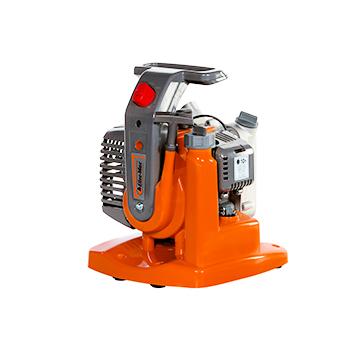
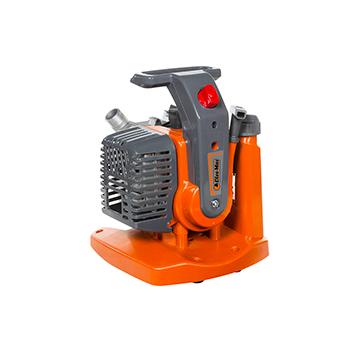
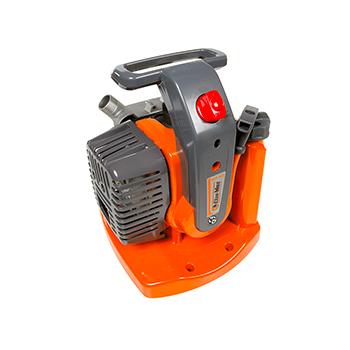
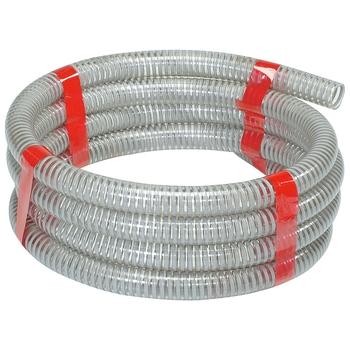
Water pump for irrigation
Water pumps are most commonly used for irrigation in both the garden and countryside, specifically drawing water from ditches, streams, ponds, rainwater butts and so on. A water pump pressurises the flow of water, allowing it to be distributed over long distances and areas of varying size using the preferred watering method (hosepipe, sprinkler or drip irrigation system) through a network of pipes, fittings and accessories. You can also use a water pump to draw water from a well that is not equipped with a submersible electric pump.
With a trolley-mounted tank and a compact petrol-powered water pump such as the WP 300, you can easily bring water—for irrigation and other purposes—to places with no supply source, or where the source has dried up due to prolonged drought. An engine-driven water pump solves the problem of irrigating and supplying water even to isolated areas or those not served by the mains power network, where it is not possible to use an electric pump (unless you have a generator).
If you'd like to find out more about irrigation using a petrol engine water pump, we suggest you read our article on how to water plants with an irrigation pump and our focus piece on the self-priming water pump: your irrigation ally. Last but not least, here you will also find the secrets to watering your garden the right way.
Water pumps: not just for irrigation
You can use the water you collect with a water pump—ideally from a rainwater butt, to save on precious drinking water—for cleaning your car or garden (path, driveway, veranda, outdoor furniture, play equipment, gazebo, etc.), with or without help from a high pressure washer.
If you need to drain your inground swimming pool—for deep cleaning, maintenance, or if you need to change the water—you can extract the water with a petrol engine water pump, without using the main drains at the bottom of the pool. You can also use a water pump to empty a mini pool or outdoor hot tub. Do you have an above ground pool? Before cleaning, servicing and moving it, or disassembling it at the end of the season, you should empty the water with a water pump: this method is a much faster than using a conventional hosepipe. A water pump is equally useful if you have a garden pond. What’s more, you can later use it to refill your drained swimming pool, hot tub or pond.
Speaking of garden ponds: if you plan to keep fish in it, a water pump enables you to fill and empty the container that you use to transport them from their place of origin to your garden. If, on the other hand, you have a passion for fishing with live bait, you'll know that to keep the bait active in their holding tank, there must be a constant exchange of water. A water pump not only helps you to change the water, but also creates a current between the water inlet and outlet points that gets the bait swimming.
Petrol engine water pumps can also be used in emergency situations, such as after a storm, to quickly pump water out of flooded garages and rooms, or drain water from waterlogged gardens caused by clogged drains or depressions in the land surface.
Do you have building work to be done in the garden or on your house? If you need to dig a hole in the ground, you may find that, for one reason or another, water accumulates in it. In such cases, a water pump is essential for draining it and ensuring the stability of the soil.
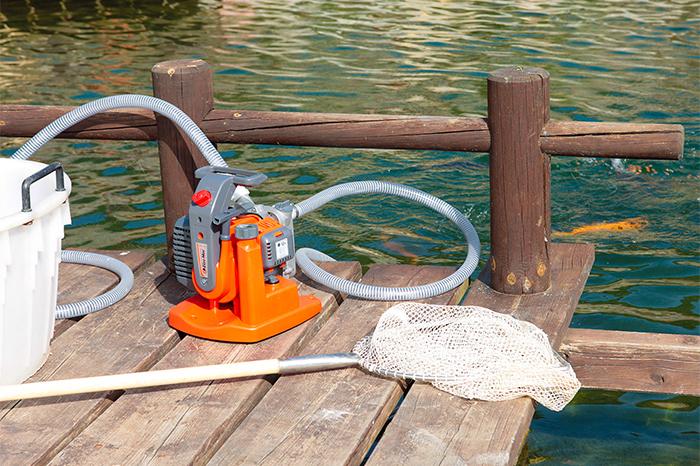
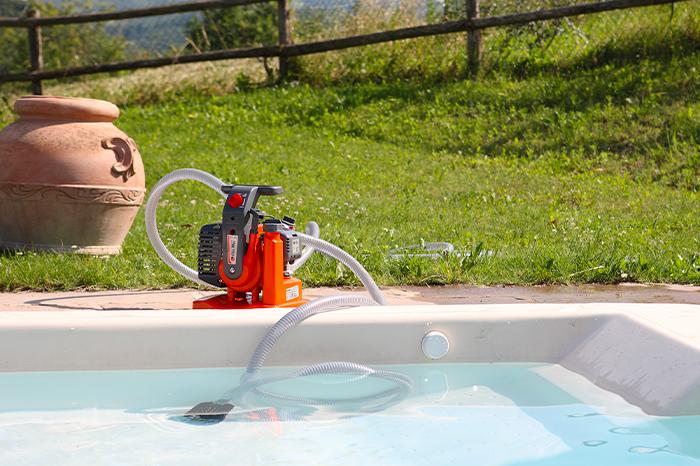
What not to do with a petrol engine water pump
Above we mentioned some of the possible uses of water pumps, from irrigation to fishing. Below are some of the activities we recommend not to do with the WP 300 self-priming petrol engine water pump.
Water pumps are only designed to work with water and other inert (i.e. chemically stable) liquids at room temperature. They should not be used as fire extinguishing devices, or to pump the following materials:
-
Paints, thinners, solvents
-
Fuels and lubricants
-
LPG or gas of any kind
-
Flammable liquids in general
-
Mixtures of chemical products that are incompatible with each other
-
Pesticides and herbicides
-
Liquids containing granules or solid particles
-
Liquids intended for human and animal consumption
-
Liquids at temperatures above 40°C



